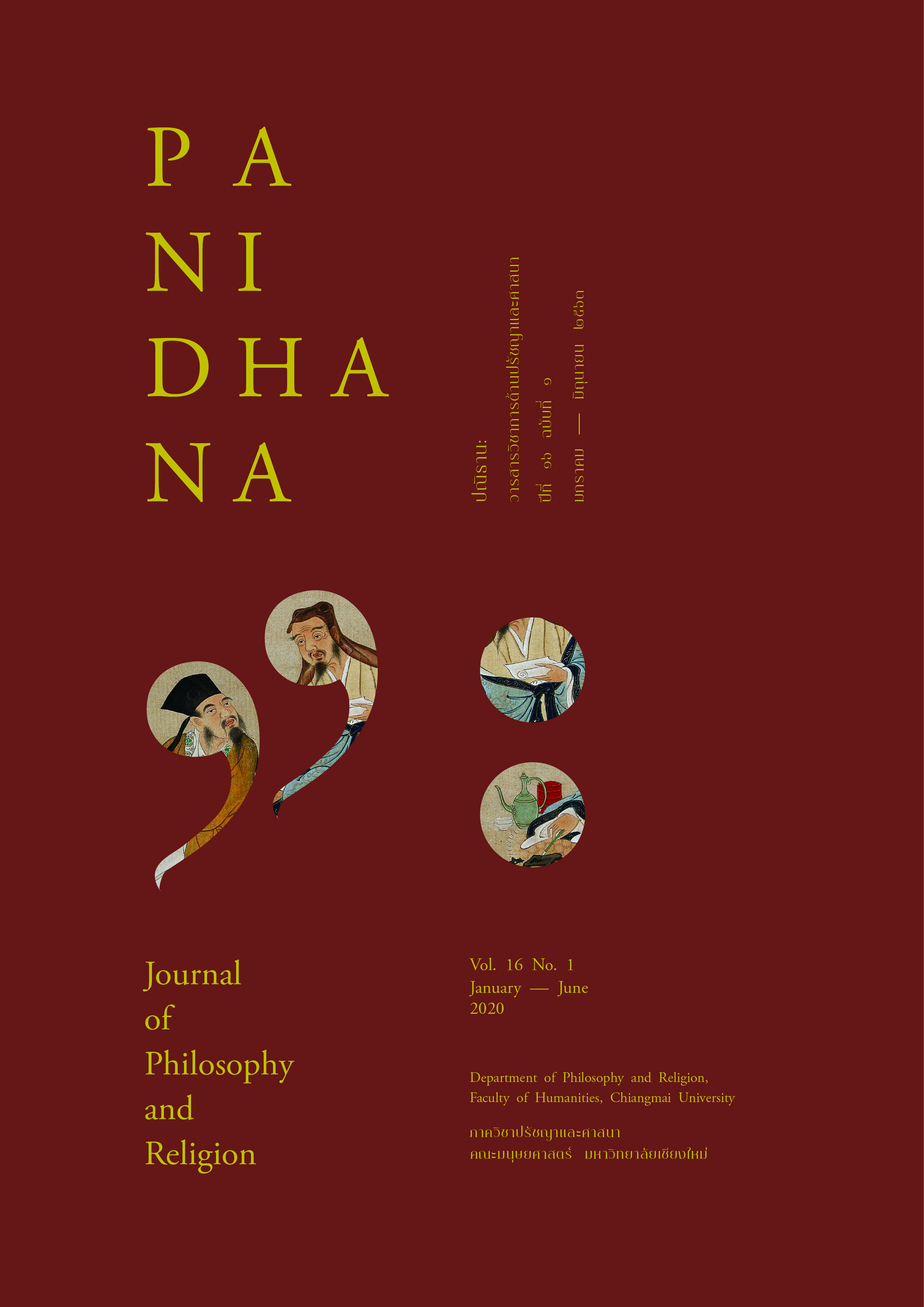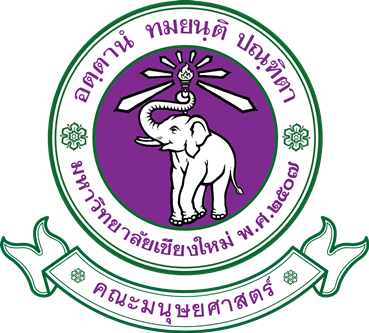วิถีชนชั้น ความบริสุทธิ์ และการผลิตซ้ำ :กรณีศึกษาวีถีชนชั้นตามแบบตะวันออกนิยมของคนชนชั้นล่างในชนบทรัฐเบงกอลตะวันตกของประเทศอินเดีย
คำสำคัญ:
ตะวันออกนิยม, การทำให้เป็นเช่นคนชนชั้นสูง (พราหมณ์), ชนชั้น, ความบริสุทธิ์, เบงกอลตะวันตกบทคัดย่อ
บทความวิชาการฉบับนี้มุ่งศึกษาการผลิตซ้ำ ‘ความเป็นอินเดีย’ ที่ถูกสร้างขึ้นโดยนักตะวันออกนิยม ที่มองอินเดียผ่านมุมมองที่ผิดเพี้ยนจากความเป็นจริง โดยการผลิตซ้ำนี้กระทำโดยชนชั้นล่างผู้ไม่ถูกนับรวมเข้าไว้ในความเป็นอินเดียดังกล่าว นักวิชาการสายหลังอาณานิคมเสนอว่าความพยายามของนักตะวันออกนิยมที่จะทำให้ประเทศที่มีความหลากหลายทางสังคมและวัฒนธรรมอย่างอินเดียเป็นสังคมเอกภาพนั้น ถือเป็นการบิดเบือนความจริง ผลิตผลของการสร้างอินเดียแบบตะวันออกนิยมที่เห็นได้อย่างชัดเจนคือการมองอินเดียว่าเป็นสังคมแห่งชนชั้น หลุยส์ ดูมองต์ (1911-1998) นักมานุษยวิทยาชาวฝรั่งเศสเสนอว่า ชนชั้นที่ปรากฎในสังคมอินเดียมีรากฐานมาจากความเชื่อเรื่องความบริสุทธิ์และความไม่บริสุทธิ์ของชาติกำเนิด ทั้งนี้แนวคิดเรื่องความสัมพันธ์ระหว่างชนชั้นและความบริสุทธิ์ของดูมองต์ถูกวิพากษ์วิจารณ์อย่างหนัก นักวิชาการรุ่นหลังมองว่าระบบชนชั้นที่ปรากฎในสังคมอินเดียมิได้มีรากฐานมาจากความเชื่อเรื่องความบริสุทธิ์ของชาติกำเนิดเท่านั้น แต่มีมาจากหลายปัจจัย อาทิ ปัจจัยทางเศรษฐกิจและสังคม อย่างไรก็ตาม บทความฉบับนี้เสนอว่า แม้ความเป็นสังคมชนชั้นที่มีรากฐานมาจากชาติกำเนิดของบุคคลจะเป็นภาพที่ถูกสร้างขึ้นด้วยความเข้าใจอินเดียเพียงบางส่วนของคนนอกอย่างนักตะวันออกนิยม ภาพความเป็นอินเดียเช่นนี้กลับถูกผลิตซ้ำในสังคมและชนชั้นระดับล่าง ผ่านกระบวนการทางสังคมที่เรียกว่า ‘การทำให้เป็นเช่นคนชนชั้นสูง หรือ Sanskritisation’ ทั้งนี้การผลิตซ้ำนี้มีเป้าหมายเพื่อยกระดับทางสังคมของชนชั้นล่าง บนฐานคิดที่ว่าหากได้ดำรงชีวิตตามแบบคนชั้นสูงแล้วพวกเขาจะสามารถยกระดับชาติกำเนิดของตนได้ บทความนี้เป็นการศึกษาเชิงชาติพันธุ์ เกี่ยวกับการปฏิบัติเพื่อดำรงความบริสุทธิ์ในแบบวิถีคนชนชั้นสูงของชนชั้นล่างที่อาศัยในชนบท เขตเบงกอลตะวันตก ของประเทศอินเดีย โดยผลของการศึกษานี้ชี้ให้เห็นว่าคุณค่าทางสังคมที่ถือปฏิบัติและจำกัดในวงชนชั้นสูง และภาพความเป็นอินเดียที่ถูกสร้างขึ้นโดยนักตะวันออกนิยม มิได้เป็นเพียงจินตนาการที่บูดเบี้ยว แต่เป็นความจริงที่ปรากฎโดยทั่วไปในสังคมระดับล่างของอินเดีย
เอกสารอ้างอิง
Book:
Desai, U. (1995). The Ayurvedic Cookbook: A Personalized Guide to Good Nutrition and Health. Lotus Press.
Dirks, N. B. (1990). The original of caste: Power history and hierarchy in South Asia. In M. Marriot, India through Hindu categories (pp. 59-77). New Delhi: Sage Publication.
Dirks, N. B. (2001). Castes of mind: colonialism and the making of modern India. Princeton, Oxford: Princeton University Press.
Douglas, M. (1966). Purity and danger: An analysis of concepts of pollution and taboo. London: Routledge.
Dumont, L. (1970). Homo hierarchicus; an essay on the caste system. Chicago: University of Chicago Press.
Gross, R. (2009). Toward a New Model of the Hindu Pantheon: A Report on Twenty-Some Years of Feminist Reflection. In A Garland of Feminist Reflections. California: University of California Press.
John Braisted Carman, Frédérique Apffel Marglin. (1985). Purity and Auspiciousness in Indian Society. Leiden: E.J. BrillBrill.
Lamb, S. (2000). White Saris and Sweet Mangoes: Aging, Gender, and Body in North India. London: University of California Press.
Mines, D. P., & Lamb, S. (2010). Everyday life in South Asia. New York: Indiana University Press.
Olivelle, P. (1992). The Samnyasa Upanisads: Hindu Scriptures on Asceticism and Renunciation. New York: Oxford University Press.
Olivelle, P. (2011). Ascetics and Brahmins: Studies in Ideologies and Institutions. London: Anthem Press.
Parry, J. (1994). Death in Banares. Cambridge, New York: Cambridge University Press.
Raheja, G. G. (1988). The Poison in the Gift: Ritual, Prestation, and the Dominant Caste in a North Indian Village. Chicago: University of Chicago Press.
Said, E. W. (2003). Orientalism. London: Oxford.
Srinivas, M. (1952). Religion and society among the Coorgs of South India. Oxford: Clarendon Press.
Journal:
lter, J. (1997). Seminal Truth: A Modern Science of Male Celibacy in North India. Medical Anthroplogy Quarterly, 11(3), 275-98.
Goulet, N. (2011). Post-colonialism and the Study of Religion: Dissecting Orientalism, Nationalism, and Gender Using Postcolonial Theory. Religion Compass, 5(10), 631-637.
Jacob, S. (2019). A Life in Balance: Sattvic Food and the Art of Living Foundation. Religion, 10(2).
Madan, T. (1971). On Understanding Caste. Economic and Political Weekly, 34(6), 1805-1808.
Marglin, F. (1985). Types of Opposition in Hindu Culture. In F. M. John B. Carman, Purity and Auspiciousness in Indian Society (pp. 65-83). Leiden: E.J.Brill.
Marriot, M. (1969). STRATIFICATION: Homo hierarchicus: Essai sur le système des castes. Louis Dumont. American Anthropologist, 71(6), 1166-1175.
O'Connell, J. (1982). Jati-Vaishnava of Bengal: "Subcaste" ("jati") without "Caste" (Varna). Journal of Asian and African Studies, 17(3).
Openshaw, J. (2007). Home or Ashram? The Vaishnava of Bengal. Fieldwork in Religion, 2(1), 65-82.
Parry, J. (1986). The Gift, the Indian Gift, and The 'indian Gift'. Man, 21(3), 453-73.
Sathyamala, C. (2019). Meat-eating in India: Whose food, whose politics, and whose rights? Policy Futures in Education, 17(7), 878-891.
Sugirtharajah, S. (2002). Hinduism and Feminism: Some Concerns. Journal of Feminist Studies in Religion, 18(2), 97-104.
Webste:
Wikipedia. (2020, March 8). Mukherjee. Retrieved from wikipidia: http://en.m.wikipidia.org/wiki/Special:History/Mukherjee
ดาวน์โหลด
เผยแพร่แล้ว
รูปแบบการอ้างอิง
ฉบับ
ประเภทบทความ
สัญญาอนุญาต
เนื้อหาของบทความที่ได้รับการตีพิมพ์ในวารสารปณิธานถือเป็นลิขสิทธิ์ของวารสารปณิธาน ห้ามเผยแพร่ ตัดต่อ แก้ไข หรือนำไปใช้ก่อนได้รับอนุญาต
ผู้สนใจสามารถติดต่อขอเผยแพร่เนื้อหาในวารสารปณิธานได้ที่ panidhana-human@cmu.ac.th







